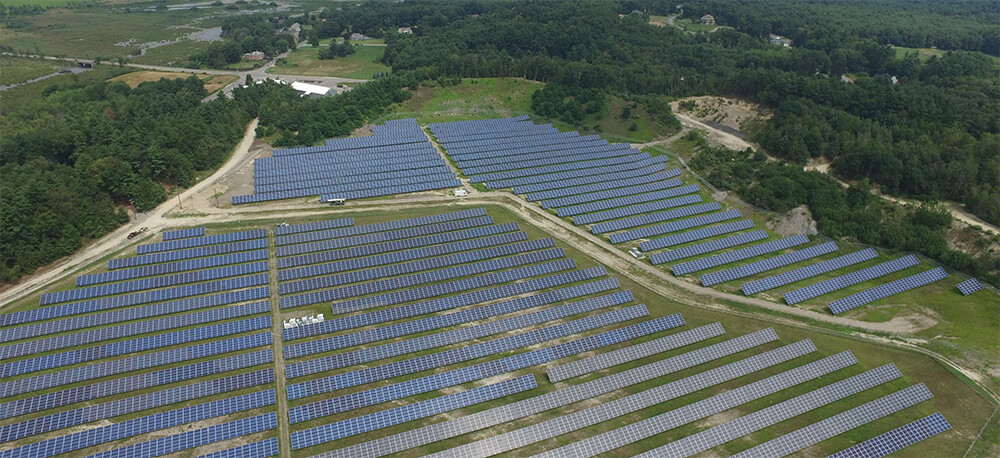10 Jaw-Dropping Facts About Community Solar
November 7, 2018

Though 173,000 terawatts of solar energy shine down on our planet continuously, it’s only recently that we’ve learned to harness it effectively with solar panels. For those who can’t install solar panels where they live, community solar is becoming a popular alternative. Even if you’re already a solar guru, here are a few facts about community solar that might come as a surprise.
1. 1,226 Megawatts
Counting projects across the country, community solar boasts 1,226 megawatts installed through Q2 2018. 42 states have at least one community solar project built, and together, those projects add up to more than 1 gigawatt of installed capacity. And, in the next few years, an additional 3 gigawatts is scheduled for development. That’s a lot of power.
2. Small Beginnings
The first community solar project was only 36 kW. While some projects today are measured in megawatts (such as the 1.95 MW Coyote Ridge Community Solar Farm in Fort Collins, Colorado, or the 2.4 MW Continental Community Solar in New York State) the first community solar project, built in 2006 in Ellensburg, Washington, was only 36 kilowatts. Community solar has come a long way!
3. The Solar Income Gap
Households with income less than $40,000/year make up 40 percent of all U.S. households, but account for less than 5 percent of solar installations. Since lower-income households are less likely to own a home (either living in a rental home or multifamily housing), they’re also less likely to be able to install rooftop solar panels where they live. Community solar can provide opportunities for lower-income households to participate in renewable energy.
4. Ramping Up
Some sources predict that by 2019, 500 megawatts of community solar projects will be installed each year. As we mentioned earlier, development of community solar is ramping up across the U.S., with 3 gigawatts planned to come online in the next few years. At this rate, by 2019, community solar will likely be a 500-megawatt annual market.
5. 100% Increase
From 2016 to 2017, community solar demonstrated a year-over-year growth in capacity of 112%. Approximately 387 MW of community solar capacity was installed in 2017, which was more than a 100% increase from the year before. No mean feat, considering that 2016 installations had nearly quadrupled over 2015. In contrast, the total U.S. solar market has grown at an average rate of 68% per year over the last decade.
6. Third-Party Contributions
In the last three years, third parties have become a bigger force than utilities when it comes to community solar administration. In 2015, approximately 60% of community solar capacity was administered by utilities, with the remaining 40% administered by third parties. Since then, these figures have shifted dramatically. According to a Solar Electric Power Association (SEPA) report, third parties currently administer 495 MW, or about 67% of the total installed capacity.
7. 1% and Growing
Community solar is responsible for just over 1% of the current installed solar capacity. The vast majority of installed solar is still utility-scale and rooftop solar, with community projects only claiming 1% of the overall capacity through Q3 2017. But with the right conditions, by 2030, community solar could provide over 2.5% of the nation’s total electricity, with a capacity of 57-84 gigawatts.
8. 6.5 Million Households
A 2016 study suggests the total potential community solar market in the U.S. is 6.5 million households. Right now, fewer than 300,000 households have a subscription to a community solar program, but the U.S. market is primed for affordable, low-hassle solar energy like the projects in the CR Community network.
9. Rural Participation
Rural participation in community solar has increased tenfold since 2013. Community solar isn’t just for apartment buildings and cities. The Solar Utility Network Deployment Acceleration (SUNDA) initiative helped rural co-ops across the nation to develop solar projects, and helped develop tools for other co-ops to assess their solar energy needs. In response, co-ops grew their community solar programs from just 19 in 2013 to 196 in 2017.
10. Solar Workforce
Solar accounts for less than 2% of overall U.S. energy production, but in 2016 the solar industry employed twice as many workers as the coal industry and almost five times as many as nuclear power. In addition to providing cleaner power, community solar can stimulate local economies with job opportunities. According to the National Solar Jobs Census, the solar workforce (all solar, not just community solar) has increased 168% in the past seven years. And as demand for community solar continues, so does the potential for job creation in this segment of the solar industry.
Though community solar programs are currently a small fraction of the total renewable energy industry, high customer interest and favorable state policies will lead the way to further development across the country. With projects in a number of states, CR Community is glad to be part of this growing, glowing future.

